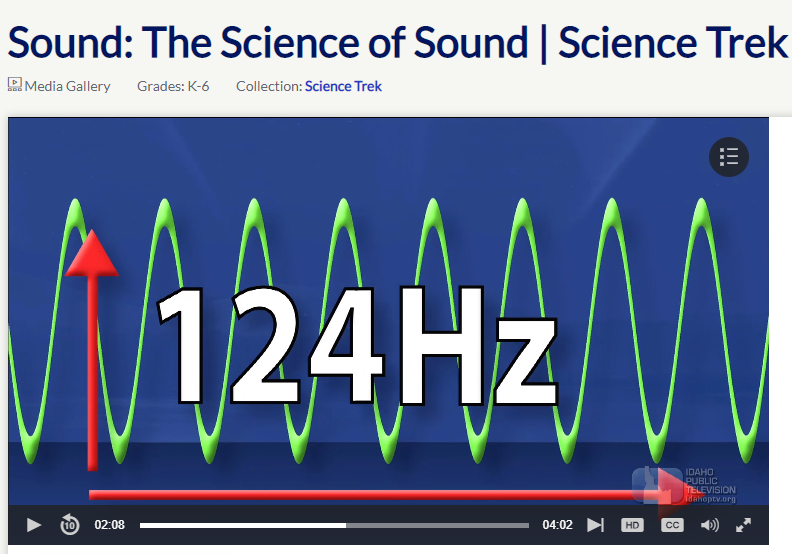
Most of us know what a sound is… but what’s the science behind it? And what can you do with sound (besides listen to it)? Plenty! We’ve selected some fascinating videos that explore the science of sound and waves. One of the most fascinating things about these videos is that they demonstrate how many unexpected ways we use sound—in our daily lives, in the lab, and beyond.
If you’ve enjoyed other videos on this topic, please share them with us!
Sound 101
Sound is energy, a special kind of energy. It moves in waves and fills our ears. But how does sound move and fill our ears? This Idaho Public Television video is a great introduction for elementary school students. Click here or on the image below for the video. You can also find an assortment of great activities here.
What Does Sound Look Like?
Let’s start with this obvious question. For a further explanation of the video below, check out this Science Alert article.
A Primer on Sound and Waves, Part 1
We can always rely on good old Bill Nye for a quick explanation. Here he is, using an oscilloscope, electronic keyboard and piano to depict the waves for sounds of varying pitches.
A Primer on Sound and Waves, Part 2
We learn a lot about our surroundings thanks to sound. But… what exactly is sound? And how does it travel? And what is this Doppler Effect that we’ve heard so much about? In this episode of Crash Course Physics, Shini goes over some of the basics (and some of the not-so-basics) of the Physics of Sound.
The Loudest Sound
When we talk about auditory volume, what we’re really talking about is how intense the pressure wave created by sound travelling through the air is, according to the video below. Sound waves are odd because they happen to move outwards from a source in the shape of a sphere. The larger this sphere becomes, and the further away from the source, the less pressure there will be at any given point of the sphere.
Make Your Own Wave Machine
Is This The Real Life?
Cymatics
Cymatics—from the Ancient Greek κῦμα, meaning, “wave”—is a subset of modal vibrational phenomena. Essentially, it means that we can see audio frequencies based upon the vibrations they make. This video deftly shows how sound can be translated into visual patterns. One example is the Chladni Plate, and another example relies on vibrations on water—much like our Chinese Spouting Bowl. If you’re interested in learning more, check out our blog on Chladni Plates. We also have a Chinese Spouting Bowl blog that’s well worth a read!
Using Standing Waves to Levitate Objects
The answers are many… and fascinating. In this video, watch as water droplets are levitated using nothing but standing waves, and then see them explode like glistening fireworks. For more details on the science behind this stunning video, consult “Watch Water Drops Levitated by Sound Explode in Slow Motion.”
How to Make Your Plants Sing
Just when you think you’ve seen it all… here’s a device that attaches electrodes to your houseplant and translates the electrical impulses into sound!
Echolocation in Humans
You may already know that certain animals (like bats and dolphins) navigate via echolocation—the ability to locate objects by reflected sound. But people can do it, too!
The Birth of a Bubble
A liquid droplet suspended in the air morphs into a bubble in this experiment. Sound waves hold the drop up, and increasing the waves’ intensity causes the drop to buckle and form a bubble.
A Physical Demonstration of Gravitational Waves
We just love Steve Gould’s videos. To learn more about what you’re seeing in this video, click here.


